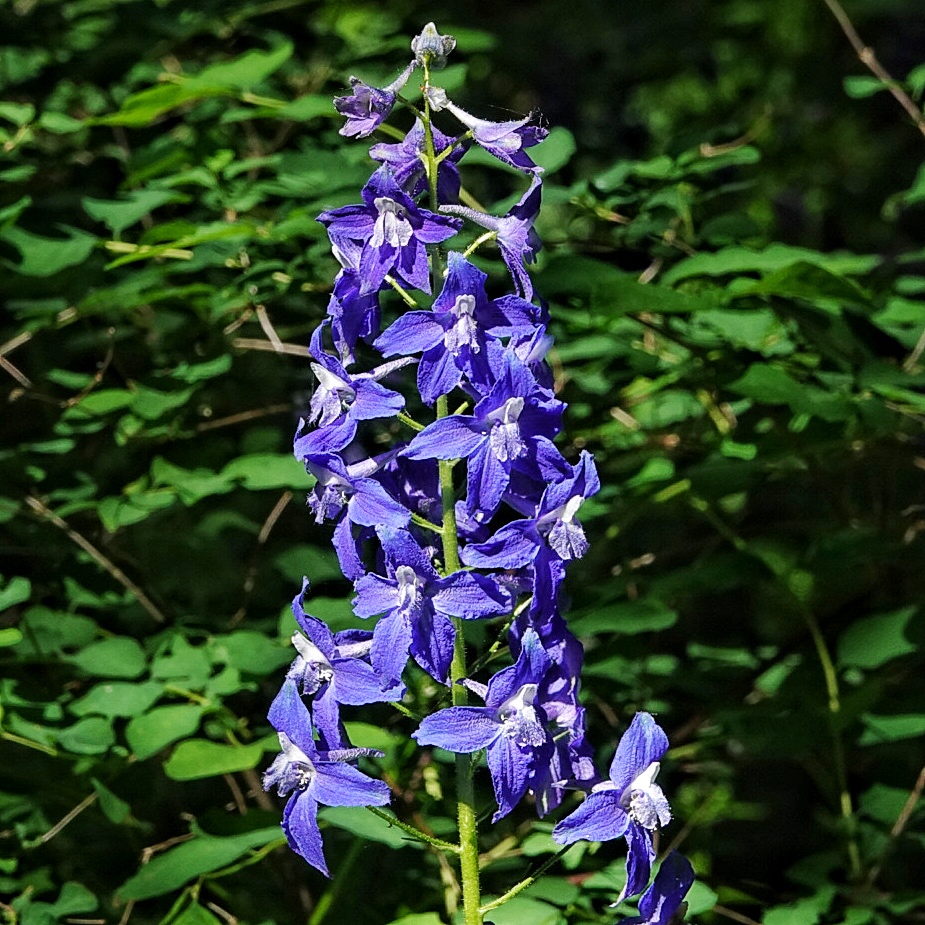
There are several common names for this species, from the utterly prosaic cow poison, poison delphinium, and poison larkspur, to Columbian larkspur and giant larkspur. But none of them come close to conveying the beauty of the delphinium forests to be found in the mid Columbia River Gorge at this time of year. Even though we knew that by June 1st they would be past their prime, still the thought of traversing that corridor of floral loveliness on the way to and from getting married was a big reason why Pam and I chose an overlook off the Cape Horn Trail at which to hold our nuptial ceremony nearly two years ago.
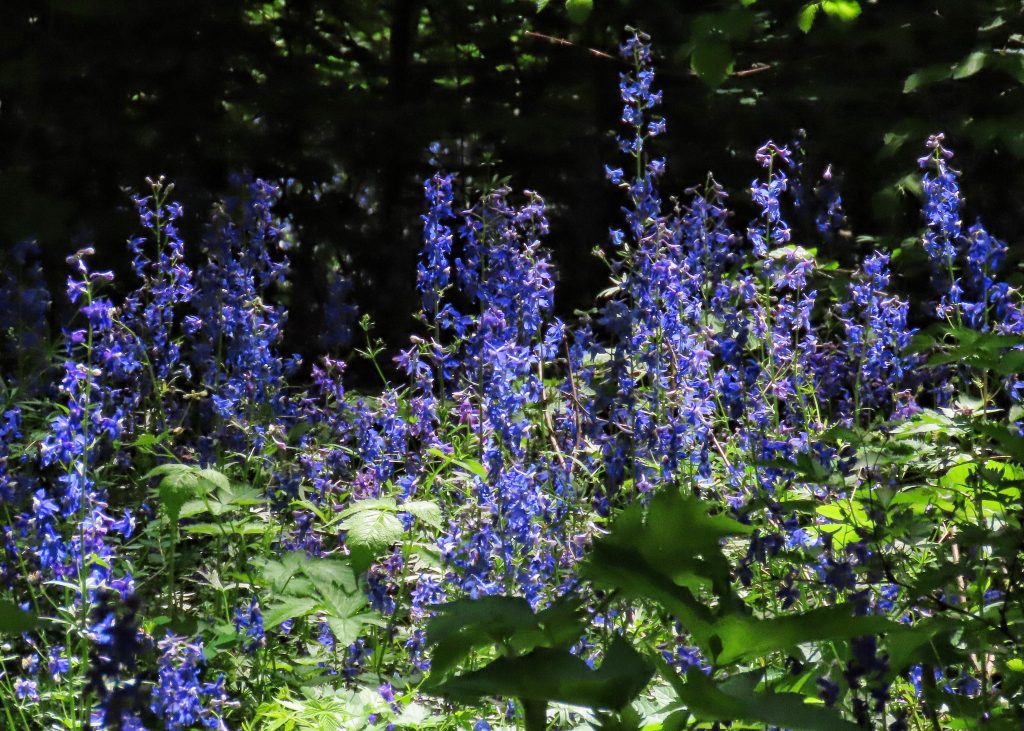
I’ve mentioned these delphiniums in a few posts of late, but it took until now to profile this species because I had never properly identified them before. A decade ago, when I first encountered the extensive stands of Delphinium trolliifolium in the Gorge, I did a quick flip through Russ Jolley’s ‘Wildflowers of the Columbia Gorge’, and decided I knew what they were. It turns out I got lucky and picked the right one, but I’ve been burned a few times of late, and couldn’t be certain of their identification until I had really examined some and ran them through a valid key.
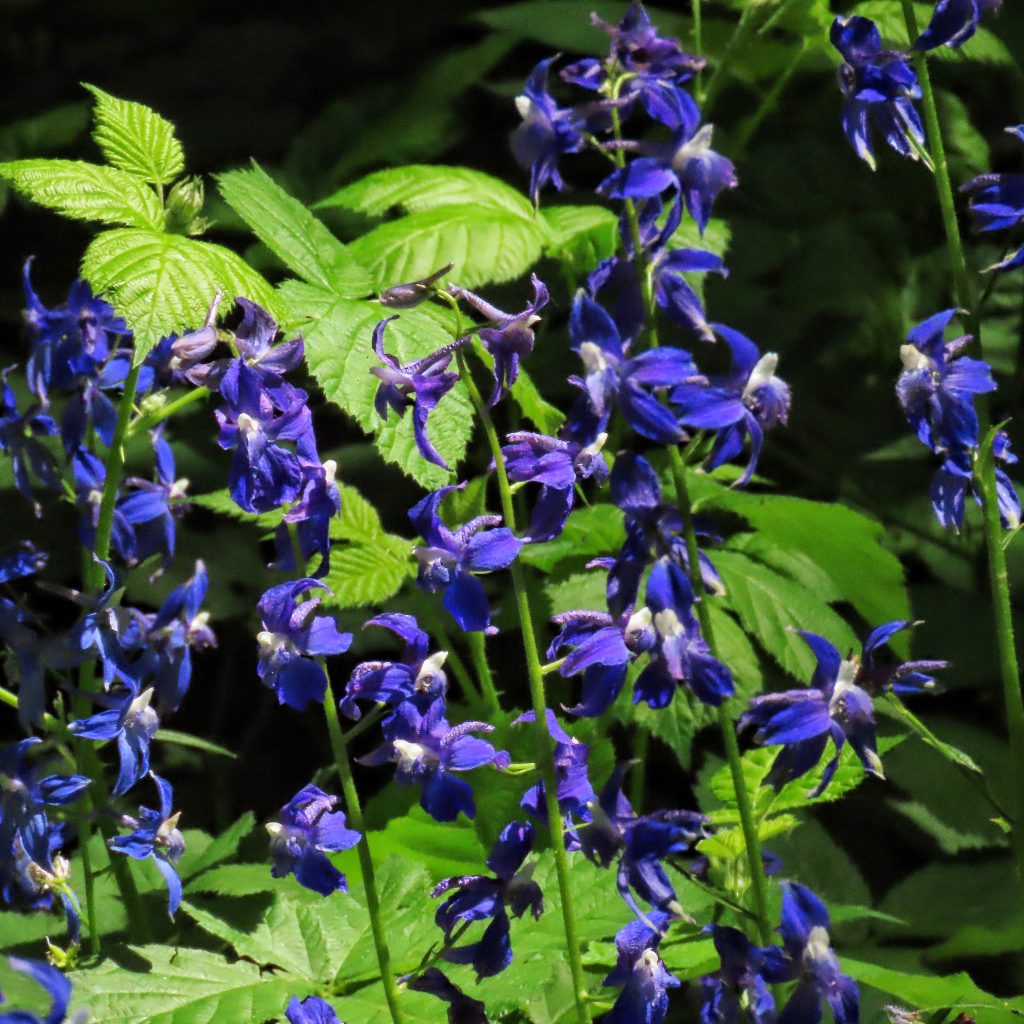
The reason you see poison in so many of their common names is due to the presence of the toxin delphinine, although many other members of the family Ranunculaceae also produce this chemical. Only 8 ounces of browse can be enough to poison a cow, depending on the amount of toxins in the leaves. And the real problem for livestock is that, unlike most other toxic plants, it is not just something they eat when nothing else is available. Instead, livestock actually seem to seek it out, sometimes with disastrous results.
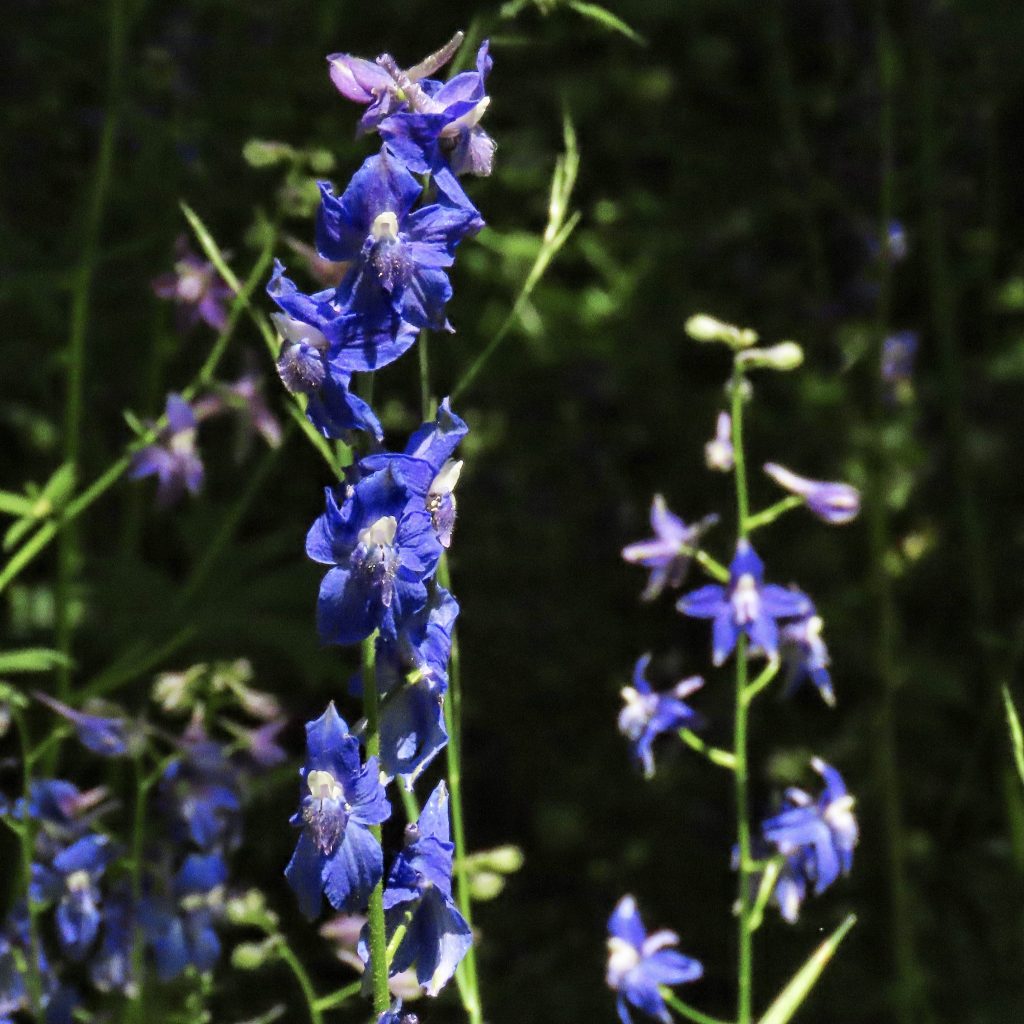
Description– Tall (up to 5’) delphinium with blue and white flowers and multiply lobed leaves; leaves only on stem, large, on long petioles, with 5-7 irregular lobes, each lobe having 2-5 pointed lobes; flower sepals 15-30mm, blue, flaring to reflexed, petals blue and white; spurs 16-23mm.
Similar species– D. glauca, D. nuttallii, D. multiplex, D. glareosum, D. menziesii have sepals pointing forward rather than flared or reflexed; D. burkei has narrow, dissected leaves; D. nuttallianum leaves have equal sized, rounded lobes, and are mostly near the base.

Habitat-Moist, shady forested areas at low to middle elevations.
Range-West Coast of North America; native; in our region it is found west of the Cascades, in the Columbia River Gorge, and in nw California.
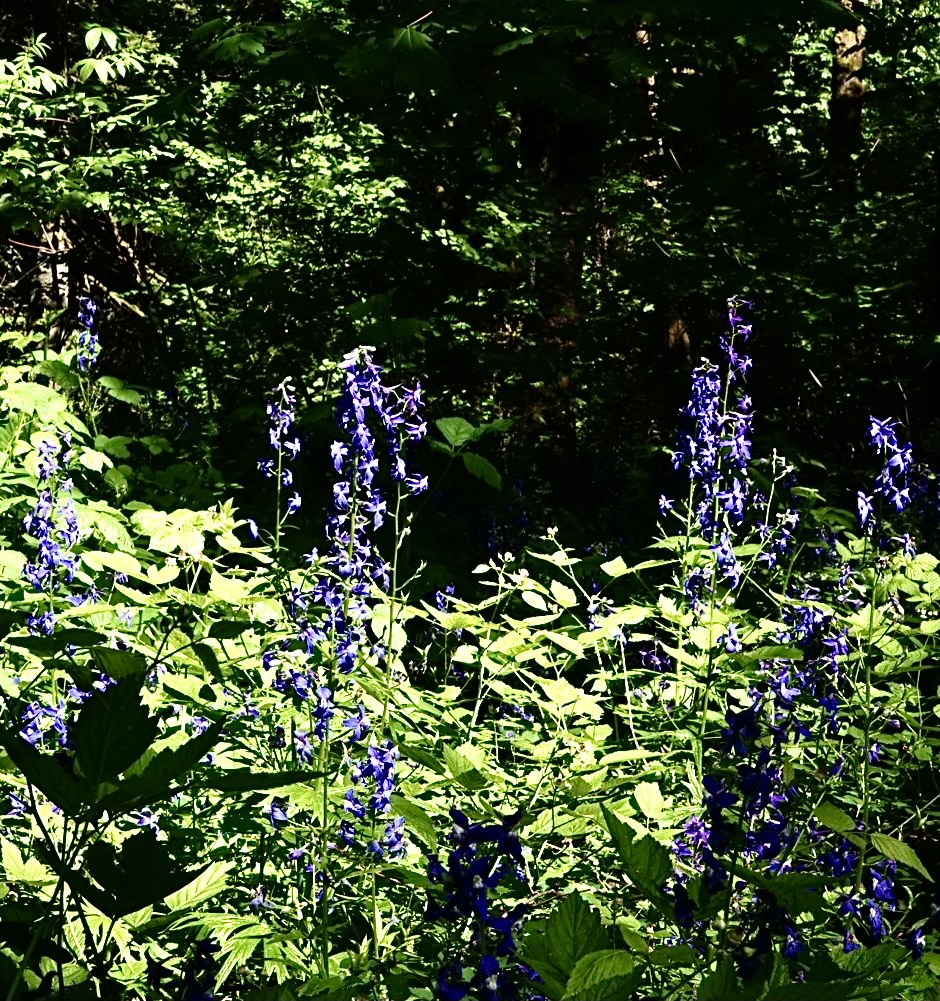
Reproductive timing– Blooms April to June
Eaten by-Larve of the moths Pyrrhia exprimens, Polychrysia morigera, and Megalographa biloba have been found on these plants, but it is not known if they are an actual larval host; pollen and nectar utilized by various insects, as well as hummingbirds.
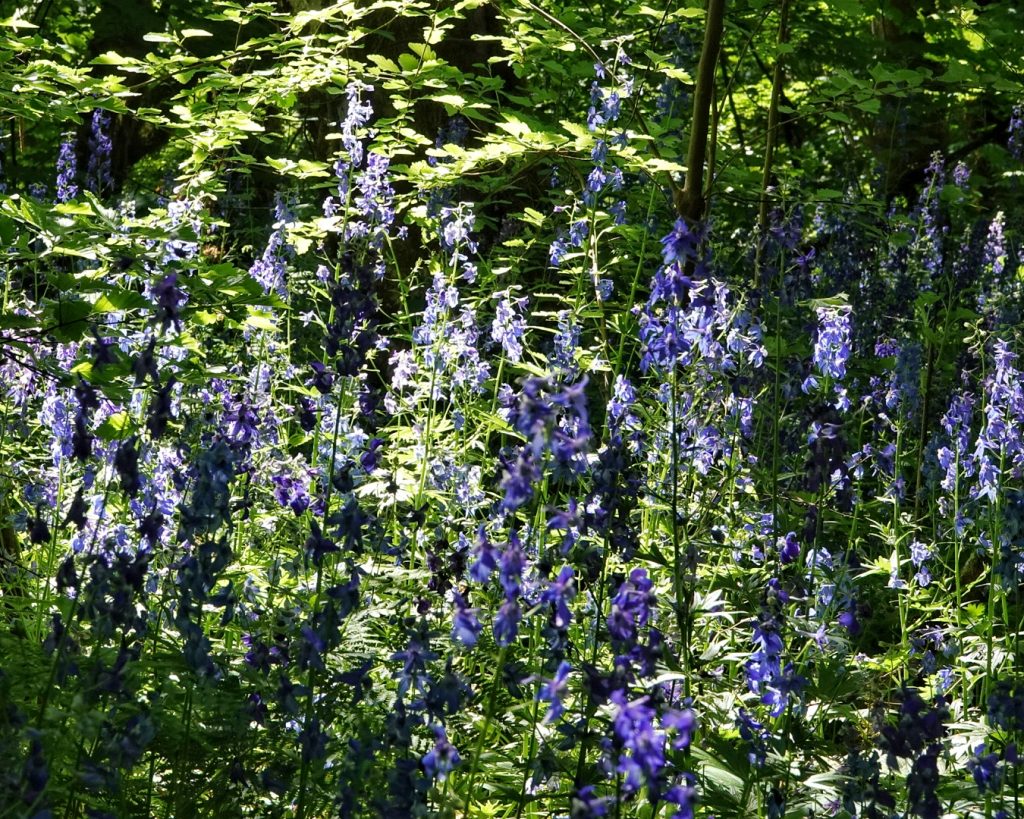
Etymology of names–Delphinium is from the Greek word for dolphin, and was the name they gave to this group of plants. Some sources say it refers to the whole flower resembling a dolphin, while other sources say it refers to the bud being shaped like a dolphin’s nose. The specific epithet trolliifolium is probably a reference to the foliage being similar to that of members of the genus Trollius, the globeflowers, which are also in Ranunculaceae. The common name for this genus is larkspur, and seems to come from the resemblance of the spur to a lark’s talon.
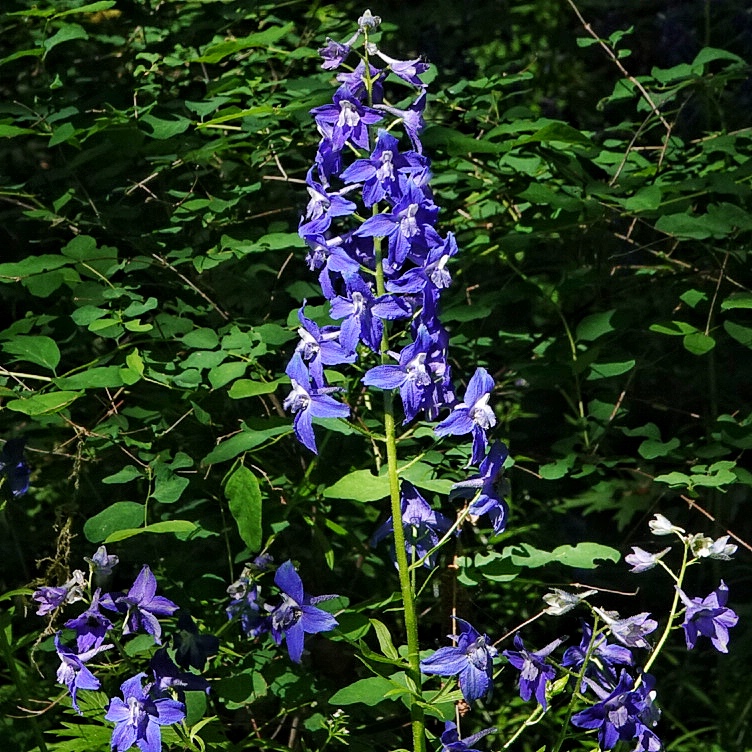
http://www.efloras.org/florataxon.aspx?flora_id=1&taxon_id=233500555
https://www.pnwflowers.com/flower/delphinium-trolliifolium
https://oregonflora.org/taxa/garden.php?taxon=4520
http://science.halleyhosting.com/nature/gorge/5petal/butter/delph/poison.htm
https://en.m.wikipedia.org/wiki/Delphinine
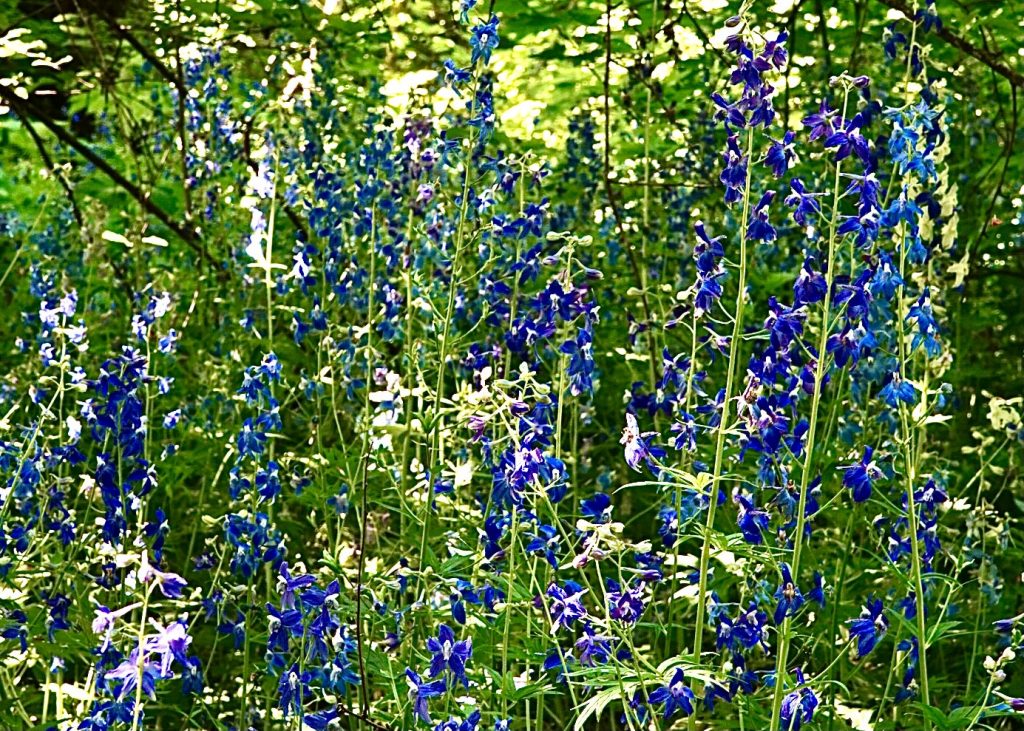
Amazing flowers! Thank you for a very interesting profile! 👍☺️